Best Shots review - Batman: Hush "a must read"
Revisiting Jeph Loeb and Jim Lee's seminal Batman story 'Hush'
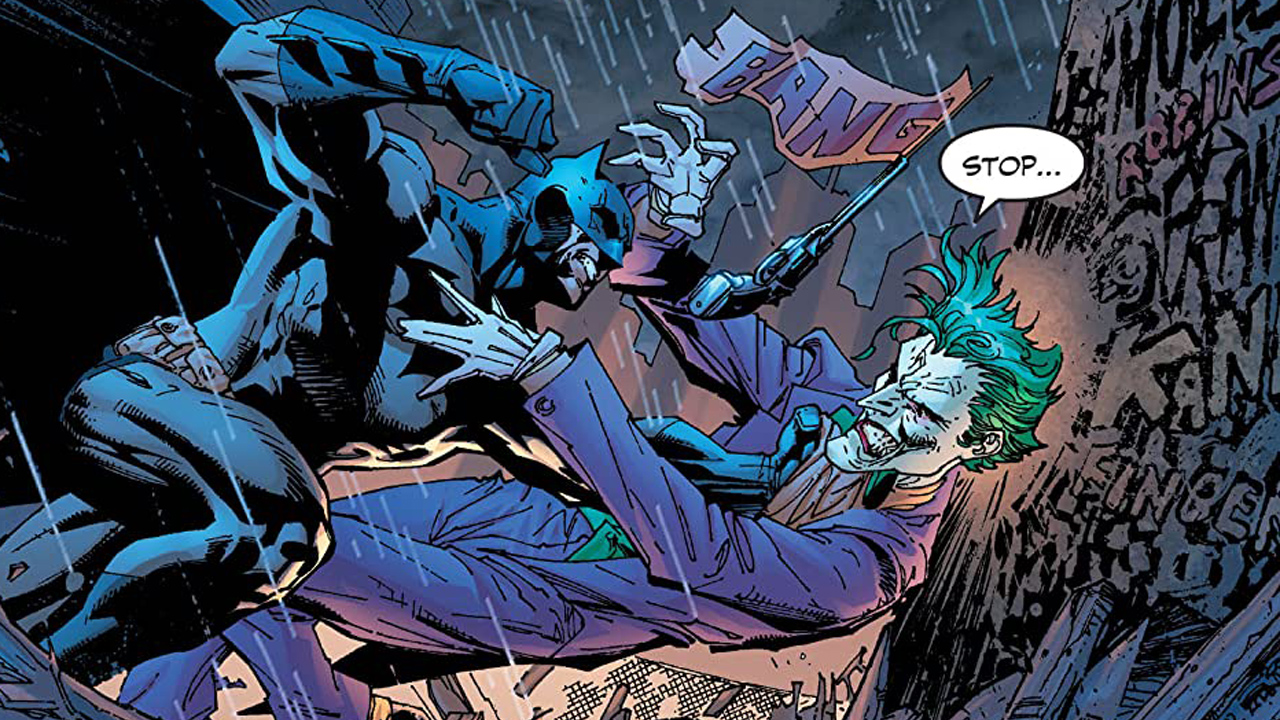
Once or twice a generation, a story comes along that either redefines a character or sets the stage for things to come that will forever alter their narrative. In the early '00s, writer Jeph Loeb paired off with rock star artist Jim Lee and frequent co-collaborators Scott Williams and Alex Sinclair to deliver a year-long story that would excite fans and influence future Batman creators for years to come. And that monumental story? Batman's 'Hush.'
Written by Jeph Loeb
Art by Jim Lee, Scott Williams, and Alex Sinclair
Letters by Richard Starkings
Published by DC
'Rama Rating: 9 out of 10
Originally published in Batman #608 - 619, with 'Hush' Loeb and Lee set out to present readers with a mystery story that would test Batman's detective skills as he sought to unveil the mastermind of a plot to take down Bruce Wayne – a plot that seemed indicate that whoever was behind the crimes and assaults also knew Batman's secret identity and used that to press the attack. Along the way, Loeb and Lee take readers through Batman's rogues' gallery as we watch him try to untangle this Gordian knot before the final blows fall.
Looking back on these issues now, there are certain questions critical readers will ask: Why was this story arc important at the time it was published? Is it still relevant today? And perhaps most importantly, does it still hold up and deliver a fun and satisfying reading years later?
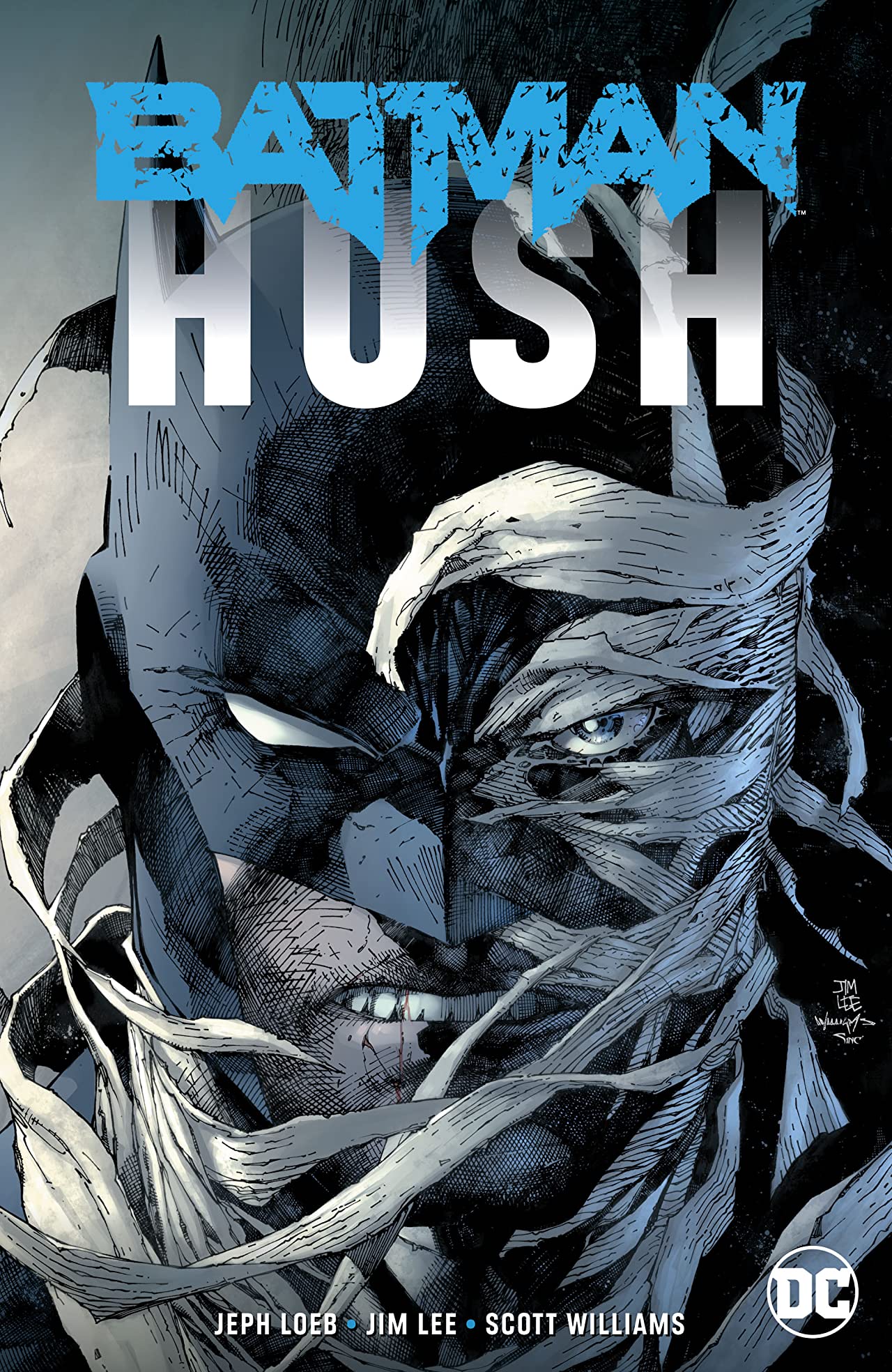
To begin, we need to look at 'Hush' when it first came out to understand why it was viewed as a significant run at the time of its release. Batman #608 went on sale in October of 2002, and at the time, Jim Lee was largely seen as one of comic books' preeminent artists, and also co-founder of Image Comics. He hadn't worked at Marvel in years at this point, and although he joined DC as part of their Wildstorm acquisition years prior he hadn't done much more than cover art for them. When 'Hush' was announced, it was a coup - Lee drawing a Big Two monthly book for the first time in almost a decade. Oh yeah, and it's not just any book - it's Batman.
Lee, who continued to moonlight as head of Wildstorm during this 12-issue run, didn't skimp when it came to workmanship. The storytelling techniques Lee employs, such as the hidden image of Catwoman committing a heist in the massive battle scene between Batman and Killer Croc in the first issue, are far from lost as we approach the end of the yearlong mystery. For my money, the flashbacks are some of the best examples of this. What many readers may not be aware of is that the many watercolor flashback scenes are courtesy of Jim Lee as well. The shift in style works wonderfully to highlight the transition to the faded memories of the past, but this also underscores the emphasis on strong visual storytelling from start to finish.
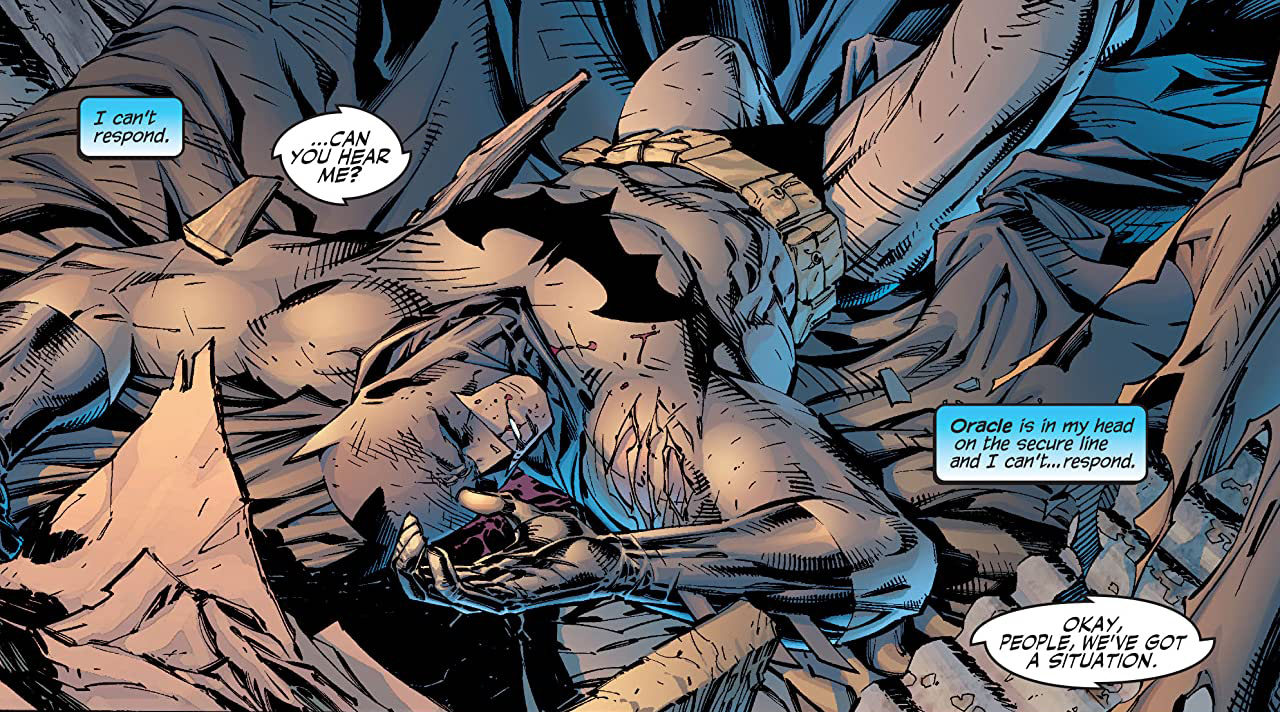
Of course, 'Hush' doesn't just showcase Jim Lee at his best. Alex Sinclair's colors continue to stand alongside some of the most dynamic work done in superhero comic books today. Of note is his choice to select a single color to emphasize a particular mood or tone and allow it to play out through the entire scene. For example, we see the graveyard scene with Clayface masquerading as an older Jason Todd covered with a bloodied red sky and the muted green grass – reminiscent of Robin's colors. Likewise, Jim Lee's linework frequently takes on a finer and lighter nature, so much of the weight and power throughout the story comes from Scott Willams' inks. Anytime Loeb sets the scene at night, Williams' work shines brightest. While previous artists masked Batman in shadows as well, the iconic outline of the cowl, glowing white eyes, and nothing else made its most indelible mark here.
It's also worth noting that writer Jeph Loeb was fresh off his critically acclaimed Batman: Dark Victory – the sequel to his collaboration with Tim Sale, Batman: The Long Halloween. Loeb demonstrates a real knack for understanding his characters, what motivates them, and as we see in 'Hush,' what they fear most. The threat to Batman's family and his failure to protect Jason Todd are continued concerns we see play out in his resistance to let others in as a way to protect them from the harm those who have relationships with Batman and Bruce Wayne seem to experience.
Comic deals, prizes and latest news
Get the best comic news, insights, opinions, analysis and more!
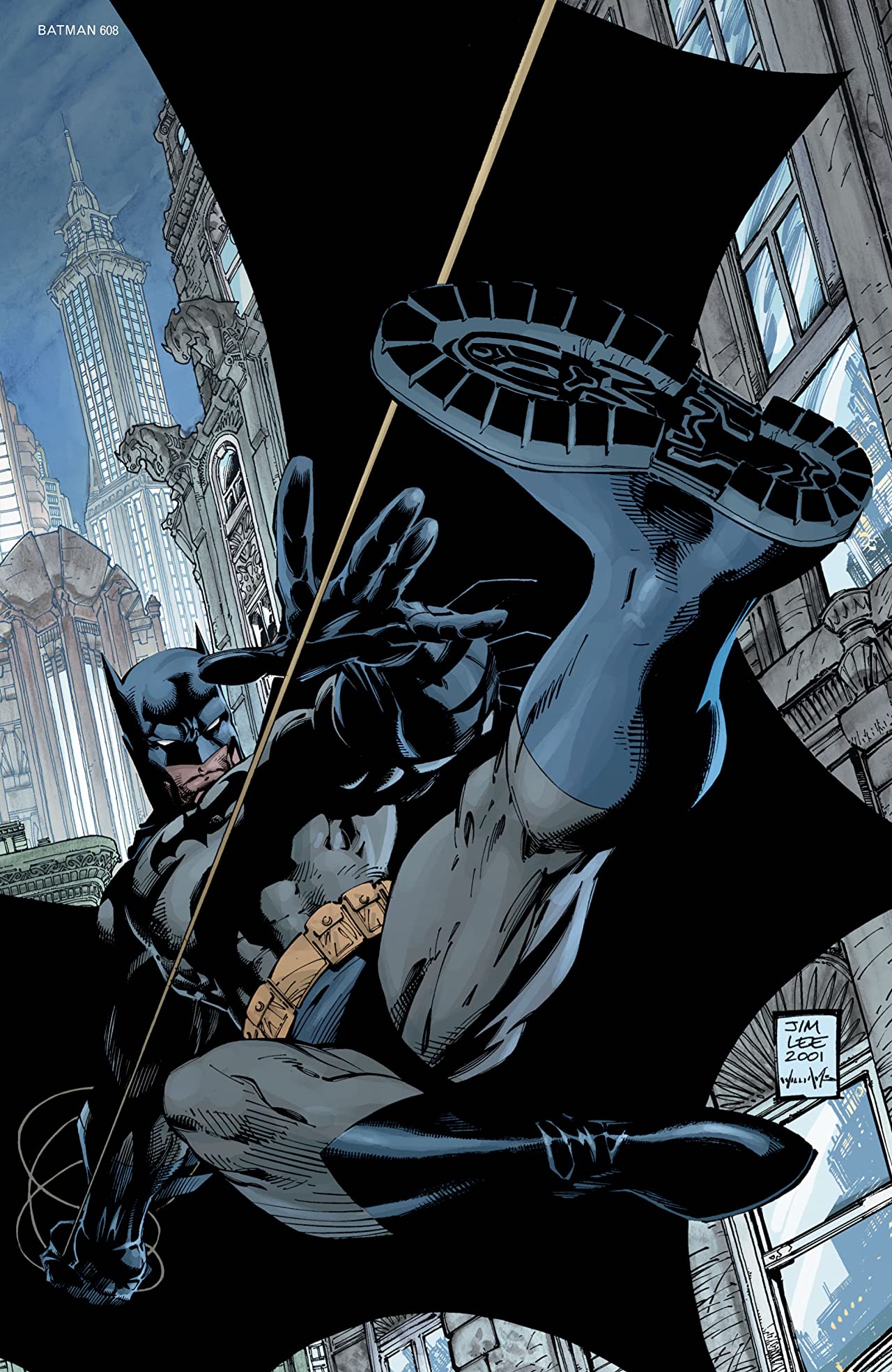
What makes this story arc stand out today though – just as it did when it closed its run – is that Loeb actually presents readers with two mysteries: The first being the one that Batman solves (who was behind the Hush crimes, with an assist from Harvey Dent) and the other that he won't uncover until years later.
From a perspective of wanting to simply see the classic Batman villains rolled out, 'Hush' does not disappoint. We see most of the classic villains participate in this story to varying extents. Fans of the Riddler no doubt appreciated Loeb's elevation of Nigma to a whole new level of criminal mastermind after years of seeing him treated as a second-stringer. Up to this point, few had ever figured out the greatest riddle of all: Who is Batman? Undoubtedly, one can feel Loeb's influence on Scott Snyder's crafting of the 'Zero Year' story arc some 15 years later here as Riddler is once again brought out from the 'B' list and elevated to the top of the class.
Likewise, we see later writers pick up on the tension between Batman and Catwoman, as this story showed him revealing his identity as Bruce Wayne in continuity to Catwoman. Despite these big reveals, however, Loeb neatly ties these up in the final issue… and at the same time, he opens the door to another whole story altogether – the return of Jason Todd and the Red Hood.
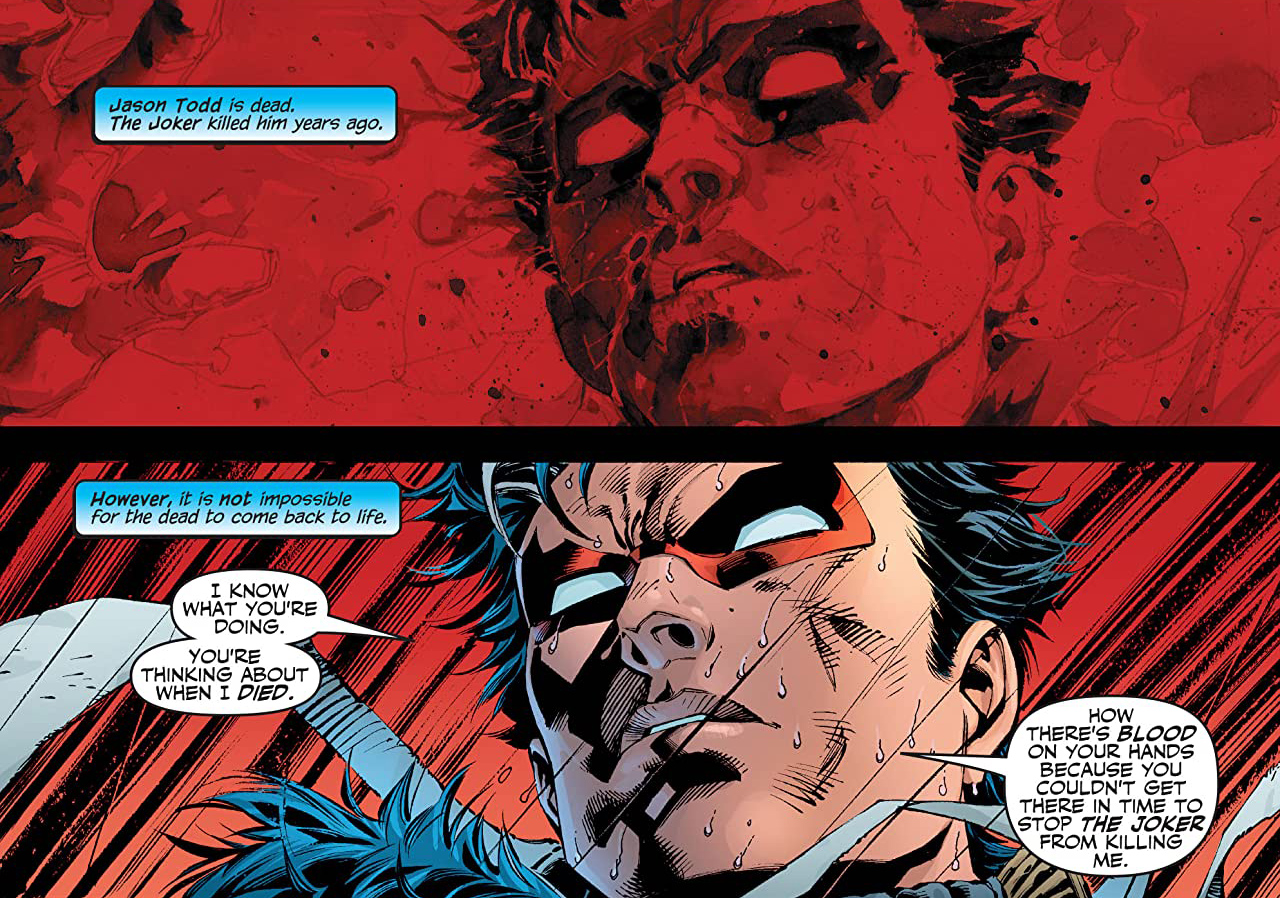
Several years later, Judd Winick would pen Batman and revisit this thread. And it's the final exchange between Batman and Riddler where Loeb gives us two important pieces of information: Jason Todd's empty grave and the used Lazarus Pit. While 'Hush' hinted at Jason Todd's return, this possibility seemingly came to an end with the discovery that we were simply looking at Clayface impersonating an aged version of the deceased sidekick. And yet, we would later see this as the key that would open the door to Jason Todd's return – a character who has since firmly re-established his place in the Bat-family as Red Hood, and as such, underscores the importance of the 'Hush' storyline in setting the stage for that comeback.
For contemporary readers, 'Hush' isn't without its flaws. The male and female characters never fail to look fresh out of a swimsuit special or body-building competition. In terms of diversity, it falls short (aside from the inclusion of characters of color like Amanda Waller, Talia, and Ra's Al Ghul, who are villainous or morally ambiguous). In this regard, there is an element of the comic books that are products of their time and may feel a bit 'off' for readers accustomed to greater levels of diversity in their contemporary superhero comic books.
Nonetheless, Loeb's storytelling still provides a mystery that keeps readers on the hook from the first issue until the end. Even for readers who are revisiting this story and know the ending, there's still satisfaction in seeing how it all comes together again. Likewise, Lee, Williams, and Sinclair's art continues to thrill with their action-packed and explosive fight sequences along with their brooding and emotional moments. For both its time and our own, Batman 'Hush' offers readers a 'must read' experience that brings us back to the streets of Gotham as it strikes a balance between presenting the well-known masked brawler and detective extraordinaire, which sets Batman apart from the rest in the DC Universe.
'Hush' is one of the best Batman comic books ever, but have you read them all? Check out our list of the best Batman stories of all time.
Dr. Forrest Helvie is a professor by day and both consumer and critic of comic books by night. Prof. Helvie can frequently be found writing comic book reviews for Newsarama, but he has also contributed to a wide range of publications and research presentations. Whether it's through in-depth interviews with writers and artists behind your favorite works, or critical analysis of them through academic essays, Prof. Helvie is always looking to help you better understand and appreciate the comic book that's in your hands.


